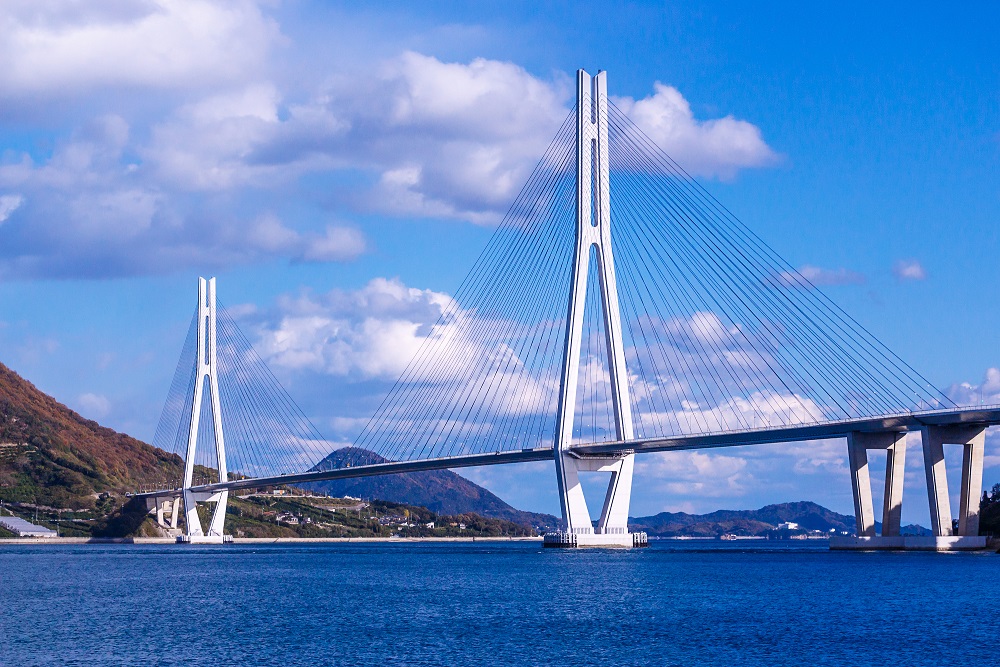The Tatara Bridge, three continuous spans, composite box girder cable-stayed bridge, is an engineering masterpiece connecting Hiroshima and Ehime, Japan. Its ground-breaking ceremony took place on August 25, 1990, and it commenced on-site construction on November 30, 1992. The bridge was opened to traffic on May 1, 1999.
INTRODUCTION OF TATARA BRIDGE
The Tatara Bridge, three continuous spans, composite box girder cable-stayed bridge, is an engineering masterpiece connecting Hiroshima and Ehime, Japan. Its ground-breaking ceremony took place on August 25, 1990, and it commenced on-site construction on November 30, 1992. The bridge was opened to traffic on May 1, 1999.
It is a part of the Nishiseto Expressway, also known as Shimanami Kaido, which is a series of roads and bridges connecting the islands of Honshu and Shikoku.

Initially, the bridge was planned as a suspension bridge, but due to the large anchorages that would be required, it was changed to a cable-stayed bridge. This decision was taken to reduce the environmental impact in the area. The bridge had a center span of 890 meters. The height of the tower is 226 meters above the seawater level, making it the highest point in the route. The bridge has two lanes of traffic in each direction.
The Tatara Bridge is a sister bridge alliance with the Normandy Bridge in France, which had a center span of 856m. The Tatara Ohashi, as it is also known, was the longest cable-stayed bridge in the world at the time of its completion. However, it is now the eighth-longest cable-stayed bridge in the world. [1]
The construction of the Tatara Bridge took almost seven years to complete due to its complex design and the need to take into consideration the preservation of the surrounding nature and the economic conditions of the work. The bridge’s composite box girder structure, supported by cable stays, makes it strong enough to withstand the harsh marine environment.
The Tatara Bridge is not only an impressive engineering feat but also an important part of Japan’s transportation infrastructure. It has helped to connect Honshu and Shikoku, improving transportation between the two islands. Additionally, it has become a popular cycling route, with the Shimanami Kaido being a scenic path for cycling enthusiasts.
Tatara Bridge’s construction and design are a testament to human engineering capabilities and a symbol of innovation and progress. The bridge has not only improved transportation between Honshu and Shikoku but has also become a popular cycling route, attracting tourists from around the world.

